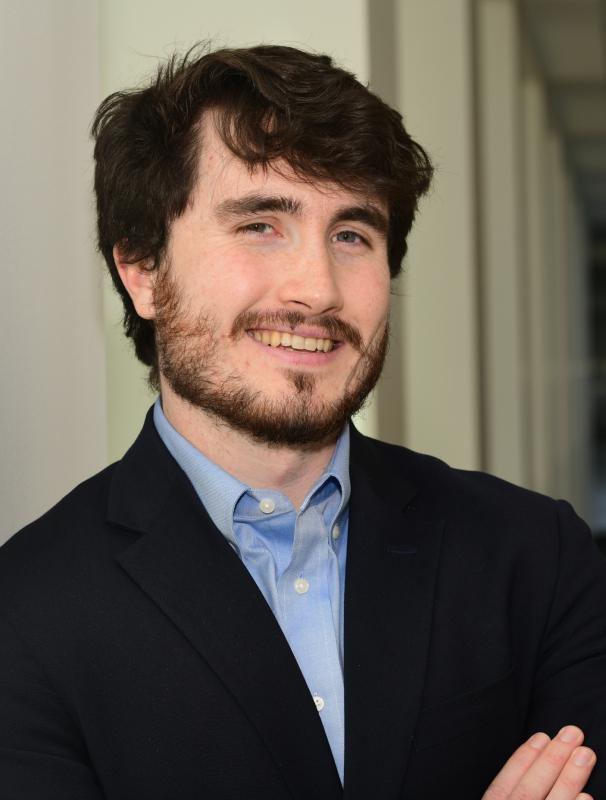
At the end of the day, we're trying to make things more efficient. This reduces our impact on the environment but also raises living standards.
As an undergraduate mechanical engineering student, Brian O’Malley was fascinated by thermodynamics, but troubled by the inefficiencies of thermal energy processes. “Is this the best that we can do?” he wondered.
Today, as a graduate research assistant for the University of Maryland (UMD) Center for Environmental Energy Engineering (CEEE), O’Malley is on a quest to do better by helping the center develop sophisticated tools to design and optimize next-generation heat exchangers used in heating, ventilation, air conditioning and refrigeration (HVAC&R) systems. Clearly, he can’t change the laws of physics, but within those bounds he’s pushing the limits, building upon CEEE’s vast experience in heat exchanger modeling and optimization.
“Our focus is on how we can make the system as good as possible. Let’s see what the upper limits are,” says O’Malley, a fourth-year mechanical engineering Ph.D. student, who earned his bachelor’s degree in 2021 at Washington, D.C.’s Catholic University. At UMD, he works under the guidance of CEEE Director and Research Professor Vikrant Aute, who spearheads the center’s Modeling & Optimization Consortium. For over 20 years, CEEE’s modeling platforms have transformed the way HVAC&R components and systems are designed. These advancements help industry bring efficient heating and cooling technologies to market quicker, while lowering engineering costs.
“CEEE is a world-class institution,” says O’Malley. “I’m lucky to work with people who have years of experience modeling, optimizing and testing heat exchangers whose experience I can draw on.”
On a personal level, O’Malley enjoys the mental challenge of pushing the limits, and loves that moment of sweet success when a model works the way he theorized – sometimes after months or even years of research and development. But what is most rewarding for O’Malley is knowing that his contributions help the global community.
“At the end of the day, we're trying to make things more efficient. This reduces our impact on the environment but also raises living standards,” O’Malley says. “There’s an accessibility issue also, a lot of people in the developing world still don’t have access to air conditioning despite living in some of the hottest climates. Making these systems more affordable has some real public health implications in a world that keeps getting warmer.”
O’Malley recently received international recognition for his research, earning third place in the student paper competition at the 20th International Refrigeration and Air Conditioning Conference, part of the 2024 Herrick Conferences on compressor engineering, refrigeration and air conditioning, and high performance buildings. As part of his research, O’Malley developed a machine learning model that can minimize the impact of uneven airflow, one of the primary causes of performance degradation in air-to-refrigerant heat exchangers. Uneven airflow has been shown to decrease heat transfer by as much as 35%. As a result, many heating and cooling units are oversized, thus increasing system costs and necessitating more refrigerant, which raises environmental and safety concerns.
O'Malley points out the intricacies of a heat exchanger engineered by CEEE.
The machine learning model predicts “flow profiles,” i.e., how much air flows into different parts of the heat exchanger. “By being able to rapidly, and accurately, predict what these flow profiles look like, we can better incorporate them into the design process and build heat exchangers that deliver the desired heating and cooling capacity, regardless of what the flow profile looks like,” O’Malley explains. Next, O’Malley plans to tackle other efficiency challenges, including ways to minimize frost on HVAC&R equipment.
Growing up on a small farm in Silver Spring, Maryland, O’Malley learned the value of hard work and responsibility at an early age. The experience also taught him about teamwork and the need to pitch in whenever necessary, even when a sheep goes into labor in the middle of the night. That more than prepared him for any late nights needed at UMD for his studies and research. He expects to complete his doctoral research in 2026 or 2027, and looks forward to a career in industry.
When he’s not in the lab, O’Malley enjoys spending time with family and friends, including his CEEE colleagues. He can often be found at the UMD gym, where he once again pushes the limits – this time lifting weights.
Top